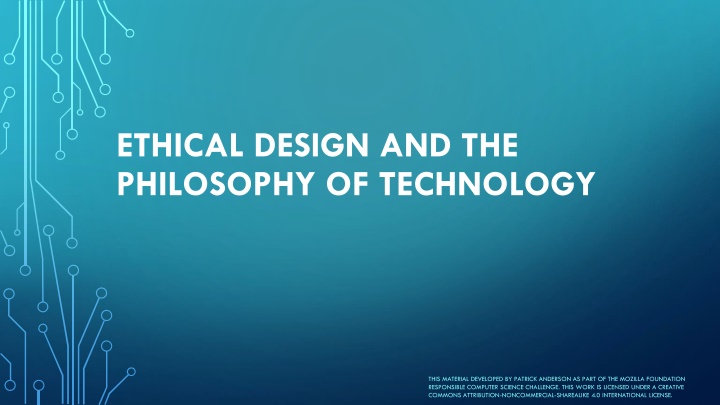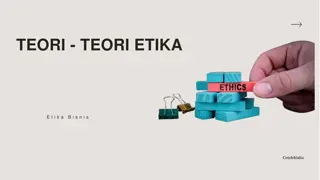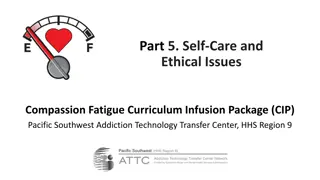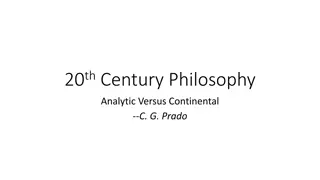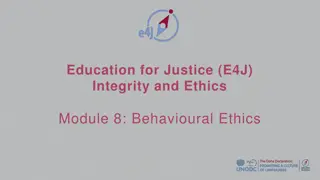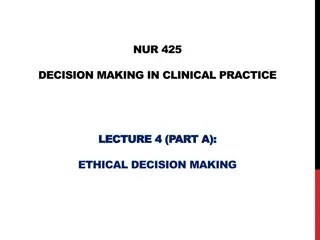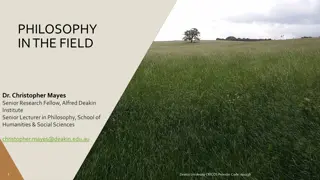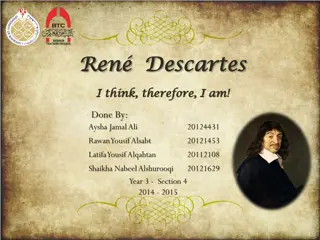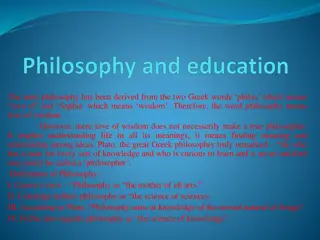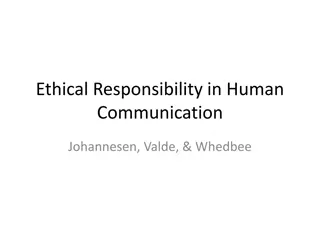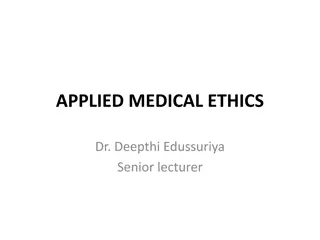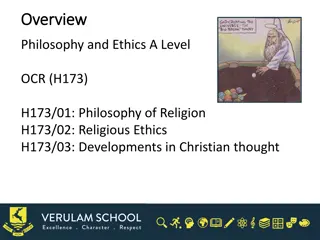ETHICAL DESIGN AND THE PHILOSOPHY OF TECHNOLOGY
Basic components of ethical theory, three approaches to philosophy of technology, and Peter-Paul Verbeek's mediation theory, with reading questions exploring human-technology relations.
Download Presentation

Please find below an Image/Link to download the presentation.
The content on the website is provided AS IS for your information and personal use only. It may not be sold, licensed, or shared on other websites without obtaining consent from the author.If you encounter any issues during the download, it is possible that the publisher has removed the file from their server.
You are allowed to download the files provided on this website for personal or commercial use, subject to the condition that they are used lawfully. All files are the property of their respective owners.
The content on the website is provided AS IS for your information and personal use only. It may not be sold, licensed, or shared on other websites without obtaining consent from the author.
E N D
Presentation Transcript
ETHICAL DESIGN AND THE PHILOSOPHY OF TECHNOLOGY THIS MATERIAL DEVELOPED BY PATRICK ANDERSON AS PART OF THE MOZILLA FOUNDATION RESPONSIBLE COMPUTER SCIENCE CHALLENGE. THIS WORK IS LICENSED UNDER A CREATIVE COMMONS ATTRIBUTION-NONCOMMERCIAL-SHAREALIKE 4.0 INTERNATIONAL LICENSE.
THE BASIC COMPONENTS OF ETHICAL THEORY Means Ends the ways the outcomes are pursued the desired outcomes; the results deemed good What ends are desirable and why? Which means are permissible and why?
LESSON A This material developed by Patrick Anderson as part of the Mozilla Foundation Responsible Computer Science Challenge. This work is licensed under a Creative Commons Attribution- NonCommercial-ShareAlike 4.0 International License.
THREE APPROACHES TO THE PHILOSOPHY OF TECHNOLOGY technologies are neutral artifacts that have no meaning until used by individuals morally relevant questions can be asked only about the users of technology and not about the technology itself technological neutrality technological pessimism technology is a force opposed to human autonomy or freedom the only morally relevant questions involve opposing technology because technology is viewed as intrinsically bad or dangerous technology and humans create each other, that they constitute each other both the user and the technology must be taken into consideration but also that a third element, the designer, must also be considered technological hybridity
Peter-Paul Verbeek Mediation Theory
READING QUESTIONS, PART 1 1. What does Verbeek seem to mean when he says that humans and technologies should not be seen as two poles between which there is an interaction; rather, they are the result of this interaction [humans and technologies] are not pre-given entities but rather ones that mutually shape each other in the relations that come about between them ? 2. According to Verbeek, what is the difference between extension relations and dialectics relations between humans and technologies? 3. According to Verbeek, what are hybridity relations between humans and technologies, and why does he seem to favor this way of thinking about humans and technology?
READING QUESTIONS, PART 2 4. What is one type of relation identified by Verbeek? Can you think of an example of a technology not mentioned by Verbeek that represents this type of relation? 5. What are the four points of contact described by Verbeek? 6. What are the types of influence identified by Verbeek? Can you think of any example technologies that fit one of these types of influence? 7. What does Verbeek seem to mean when he says that Designers materialize morality ?
Points of Contact Form Physical Point Description When humans physically interact with a technological object When humans receive or interpret information provided by a technological object When technology is part of the infrastructure of the human s environment To the Hand Before the Eye Cognitive Behind the Back Contextual
Types of Relations A relation in which the human and technology temporarily merge to interact with the world, like a telephone or a microscope A relation in which the human interacts with a temporary merger of a technology with the world, like an MRI or a metal detector A relation in which the human interacts with a technology while the world remains in the background, like an ATM A relation in which technologies are part of the ambient background of human experience, like the humming of a refrigerator or air conditioner Embodiment Hermeneutic Alterity Background A relation in which the human and technology permanently merge to interact with the world, such as a chip implanted in the brain (the main difference between an embodiment relation and a cyborg relation is the duration and depth of the merger between human and technology) Cyborg A relation in which the human interacts with a permanent merger of a technology with the world, such as the internet of things and smart assistants (the main difference between a hermeneutic relation and a immersion relation is the duration and depth of the merger between technology and the world) Immersion A relation in which there is a simultaneous embodiment and hermeneutic relation, such as with Google Glass Augmentation
MEDIATION ANALYSIS QUESTIONS Ends: What kind of humanity does this technology seem to promote? Identify specific relationships or behaviors as evidence for your answer. Means: What type of influence does this technology seem to impose on the human user: coercive, decisive, persuasive, or seductive? What is the evidence for this conclusion?
LESSON B This material developed by Patrick Anderson as part of the Mozilla Foundation Responsible Computer Science Challenge. This work is licensed under a Creative Commons Attribution- NonCommercial-ShareAlike 4.0 International License.
MEDIATION ANALYSIS STAGE 1 Given the technology under consideration, determine the following: 1. What is the point of contact between the human and this specific technology: physical, cognitive, or contextual? What is the evidence for this conclusion? 2. What is the type of relation between the human and this specific technology? What is the evidence for this conclusion? 3. What type of influence does this specific technology seem to impose on the human user: coercive, decisive, persuasive, or seductive? What is the evidence for this conclusion?
MEDIATION ANALYSIS STAGE 2 Given the technology under consideration, determine the following: 4. Does the technology promote at least one type of desirable human relationship or behavior? If yes, what is that relationship or behavior and why/how does the technology promote it? 5. Does the technology impede at least one type of desirable human relationship or behavior? If yes, what is that relationship or behavior and why/how does the technology impede it? 6. To what extent do you think the designers intentionally or unintentionally designed the technology to promote or impede these relationships and behaviors? Do you think they would make any changes to the technology if you explained your analysis to them? Why or why not?
